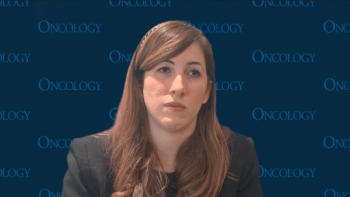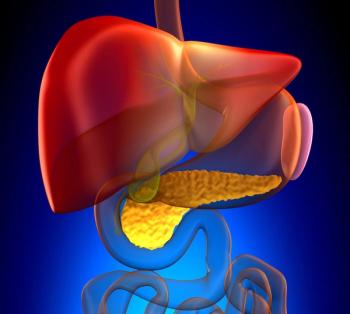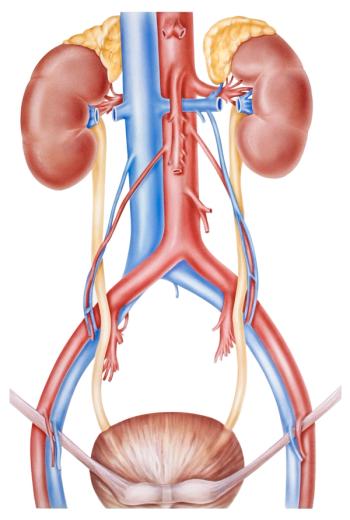
Molecular Insights Into Cancer Cachexia: An Evolution in Identifying the Syndrome
Vickie Baracos, PhD, discusses recent results that investigate cancer cachexia and how the RNome of the muscle plays a role.
Cancer cachexia, characterized by severe muscle wasting, poses a profound clinical challenge in oncology, negatively impacting patient outcomes, tolerance to treatment, and overall quality of life. Research in this area has been growing, yet a critical question remains: Why do otherwise similar patients, with the same cancer and treatment plan, experience cachexia and muscle wasting either to varying degrees or not at all?
Understanding this wide spectrum of individual differences requires obtaining human muscle tissue from patients across the cachexia spectrum. Historically, this has been "enormously challenging" because muscle acquisition is invasive, often not agreed to by patients, and is restricted by research ethics committees unless invasiveness is minimized. Consequently, there is a "huge disproportion" in research between animal models and human participants.
Vickie Baracos, PhD, professor and faculty of Medicine and Dentistry in the Oncology Department at the University of Alberta, spoke with CancerNetwork® about how her team overcame this hurdle by innovating a way to acquire the muscle. Working with cancer surgeons, they obtained permission from patients to perform a muscle biopsy during planned cancer surgery. This resulted in an extraordinary 97% agreement to participate, providing the first step to acquiring a representative sample of muscles from the at-risk group.
The next significant innovation was performing a complete analysis of the coding and non-coding RNA—the entire RNome—of the human muscle. This marked the first time this level of comprehensive analysis had been reported for any human muscle under any condition. Applying cluster finding analysis to this first-ever data set, the team sought to observe whether subsets of patients coexpressed certain genes. The key finding was a revelation: There were not many clusters, but simply 2 distinct clusters. The muscles of these patients seemed to be mutually coexpressing either subtype 1 or subtype 2, with the 2 subtypes being about as far apart as possible, yet showing extraordinarily high coherence within each cluster.
CancerNetwork: Are you able to provide some background for this study?
Baracos: Patients with cancer may or may not experience muscle wasting, and when they do experience muscle wasting, they do so to varying degrees. One of the key questions is why otherwise similar patients, with the same cancer, the same treatment plan, experience cachexia and muscle wasting or not. There’s a difference among individuals who have that condition. If you want to get into the details of that condition, the first thing you need to do is obtain muscle from patients with cancer across that spectrum. That turns out to be enormously challenging.
Getting a muscle from a person is by its nature invasive, and it is not agreed to by patients, and it is not permitted by the research ethics committee unless a substantial effort has been taken to make sure that the invasiveness is minimized. For those reasons, if you look in the literature to find out what’s going on in human muscle in cancer, as opposed to what’s going on in animal models of cancer, there’s a huge disproportion in the amount of research that has been done on human participants. This is just the first step through a very big starting gate. What that step is is having a way to make the acquisition of the muscle entirely non-invasive. The innovation there was to work with the cancer surgeons and obtain permission from patients to have a muscle biopsy when they were having a cancer surgery. This is an incision that passes through their muscles and allows them to freely participate. We got [about 97%] agreement to participate in our study. There you have the first step to acquire a representative sample of muscles from people in the at-risk group.
The next big innovation is that this is the first time anyone has reported a complete analysis of the coding and non-coding RNA, so the entire RNome of any human muscle, under any condition. We have a first-ever data set that we’ve applied methodology to, which would allow us to understand whether there are clusters of expression behavior. That effort to understand clusters of expression behavior is something very well documented in the literature. People have been doing this analysis on tumors for a long time with RNomes, proteomes, genomes, etc.
The cluster finding analysis is an important way of saying, “Okay, this is a completely black box”, and that’s something I wish for you to understand. It’s a black box, as far as we know. In the first few [patients], inside the human muscles, it seemed to us a great idea to apply these methods simply to observe whether in that sample there are subsets of patients coexpressing in certain groups, so that we could gain our first biological understanding from those subsets. Off [we went] to do the cluster analysis. The first thing out is that there are not many clusters…. The fact of not finding 5 clusters, nor 4 clusters, nor 3 clusters, but just 2 clusters, is a revelation. It seems that the muscles of these patients are either mutually coexpressing subtype 1 or subtype 2, and those 2 subtypes, as clusters go in that analysis, are about as far apart as you could get. But within those clusters, the coherence is extraordinarily high.
What does that mean? Those clusters have a whole bunch of signals that you can interpret as biological readouts. That signal can lead you to a lot of key places…. One of the things that would be incredibly important would be to look into the other muscle-wasting conditions of humans and discover if, in those conditions, the solution is 2 clusters. If they were just 2 clusters, and these clusters existed in muscle wasting, in response to acute or chronic disease conditions, if that were to be true, that’s worthy of understanding, because it would mean that if all the atrophy conditions had a common program, then they could have a common therapy. It’s important to discover, in one light, whether the muscle atrophies that we are concerned about in different diseases and conditions are bound together by a common set of transcriptional regulations.
How do you envision the discovery of subtype 1 translating into actionable practice for oncologists in terms of prognostic stratification and clinical trial design?
We found 160 differentially expressed canonical pathways, and these 160 differentially expressed canonical pathways have all types of signals. One of them is truly expected: it’s inflammation. Another one that you might argue is expected is neurons and synapses, because muscles and nerves are intimately connected. Perhaps one of the [largest] branches of physiology is about how nerves and muscles communicate with each other. The neuromuscular signals that we’ve seen certainly require more work, because we have not seen a lot of experts in neurons and synapses in the cachexia field. That would draw in new clinical research to discover how well muscles and nerves communicate with each other in people with cancer cachexia.
The inflammatory part has been such a strong theme in cachexia research for so many years that many people believe that inflammation is the common pathway that may connect different cachexia conditions. Now we’ve got some new insight into what that looks like, and it’s a bit sobering. On the one hand, if you look in the clinical cachexia therapeutics field, you will see people having tried to modify cachexia with non-steroidal anti-inflammatory drugs, such as ibuprofen. That seems to have shown no clear efficacy. Now that we look at the inflammatory signatures we found, the answer as to why that was seems quite obvious. This is a more complex and perhaps much more entrenched inflammation than could be solved by that single agent.
Going back about 40 years, it was discovered that pro-inflammatory cytokines, interleukin-1, interleukin-6, and tumor necrosis factor-α [TNF-α], talk to muscle cells via receptors and instruct the muscle to break down. That is one of the premises for believing that muscle atrophy is directed by inflammation. Very early on in clinical cachexia, people tried monoclonal antibodies to knock out one of those cytokines. An antibody to interleukin-1 [didn’t work], an antibody to TNF-α had no clear effect, and an antibody to interleukin-6 gave a slight signal, but nothing that would have encouraged pursuing interleukin-6 alone as a therapeutic target. That is why those things didn’t work.
It is also very obvious when we see inflammation in muscles, which is an explosion of cytokines, chemokines, inflammasomes, and apparently, cellular inflammation involving leukocytes, leaving the bloodstream and entering the muscle tissue. While that inflammation seems overwhelming, it opens a door to approach cachexia with the therapeutics we have now, or the therapeutics we can develop to manage this inflammation. Often, in a completely different world, things like cytokine storms, which we find in the muscle, are very topical. There’s strong research going on in the field of critical illness and critical pulmonary disease, looking at the mechanisms of cytokine storms and looking for ways to manage them. It’s pulmonology intensive care, and also rheumatology, where people are working on managing this type of inflammation. A door has been flung open, and we’re going to have to work our way through all these different mechanisms to discover those that are keystone for cachexia to begin, and then keystone for cachexia to be propagated and amplified, and to continue over the long term. This is a positive moment in the evolution of the cachexia business to have opened the door of Pandora’s box. This is a moment of opportunity, and there will be several threads in there that we can pursue towards better therapeutics.
Which of these newly emphasized biological domains represents the most promising and therapeutically tractable target for clinicians right now, and what types of interventions might apply?
For anti-inflammatory approaches, it’s not clear which is the best course. It opens the possibility of moving into the repertoire of existing anti-inflammatory agents and into the repertoire of anti-inflammatory strategies in other disciplines where there is a similar type of inflammation. There are also other clues that we may think about…. It is also possible—and we haven’t done this—to take the signatures that we have found in the transcriptional difference between subtype 1 and subtype 2, and use the magic of pathway finding analysis to impute the upstream regulators of that transcription. It is also possible, using appropriate tools, to impute the drugs that would influence different axes of that expression. That’s also another step that would allow us to think out loud about which drugs might align with these inscriptional signatures.
Do these sex-specific molecular differences warrant the development of gender-specific supportive care guidelines or dosage adjustments for anti-cachexia agents in male vs female patients?
Sexual dimorphism is a very topical question, and not in the least concerning muscle. Perhaps you’re aware that muscle in any instance is sexually dimorphic. Men have bigger muscles with bigger muscle cells in them. Male muscle hypertrophies more intensely under equal signals than female muscle. It also atrophies more intensely than female muscle. Male muscle is perhaps a bit more emotional—if I could use that term. Then, the transcriptional level, the expression of proteins in muscle, and the metabolism of muscle show sexual dimorphism. When we went into our signatures, there was a reason that we explored those in a sex-specific fashion before we went on to report on that expression, which was common to men and women. Our signatures are those that are common, but there is also some differential female-specific and male-specific expression. This is another field where we do need to do a lot more. Ideally, you would want a therapy that would attack the problem equally well in both men and women. We’re looking for sexual dimorphism, but we are looking for a common pathway between men and women so that we don’t end up with therapeutics that happen to work only in men or only in women. That’s another ongoing and evolving piece of cachexia research.
Looking at all the research observed in this study, how will this help benefit patients in the future?
There’s a broader question at the beginning of “What can we do now?” We have made an awful lot of gains in the recent past on some of the mechanisms of cachexia. The key mechanism of that cachexia traction that has been studied is the loss of appetite. Patients with cancer have profound muscle abnormalities, and they also don’t eat much. There has been an enormous amount of [research] as to the mechanisms of why they don’t eat much. What I think the hope is, and why I make this example, is that we’ve been able to get into the central nervous system to discover how cancer perturbs people’s appetites. We have therapeutic targets in the central nervous system, and that is already yielding results. The American Society for Clinical Oncology has now made a recommendation to use olanzapine [for patients with cachexia]. We’ll see what happens with the ponsegromab agent and other agents that inactivate the mechanism of growth and differentiation factor number 15. What we’ve learned about these subtypes is that as knowledge of what’s going on in muscle is becoming increasingly apparent, it’s going to shorten the pathway for us to get to those therapeutic targets in muscle.
Is there anything else you would like to highlight?
I’d like to encourage everybody to think about cachexia. I’d like to encourage clinicians to take a view of their patients and understand if they’ve started cachexia, and how quickly it’s rolling forward. I’d like them to deploy whatever means they have access to support people experiencing cachexia and to record any feelings of distress or anxiety they may have about this issue. Then I’d like to encourage everybody who’s a researcher to participate in cachexia research. Start trials at your center. Encourage others to get involved in research. I hope that clinical and experimental cachexia researchers will find a common coffee pot that they can gather around so that we can build on the momentum that is happening now.
Reference
Bhatt BJ, Ghosh S, Mazurak V, et al. Molecular subtypes of human skeletal muscle in cancer cachexia. Nature. 2025;646(8086):973-982. doi:10.1038/s41586-025-09502-0
Newsletter
Stay up to date on recent advances in the multidisciplinary approach to cancer.


















































































